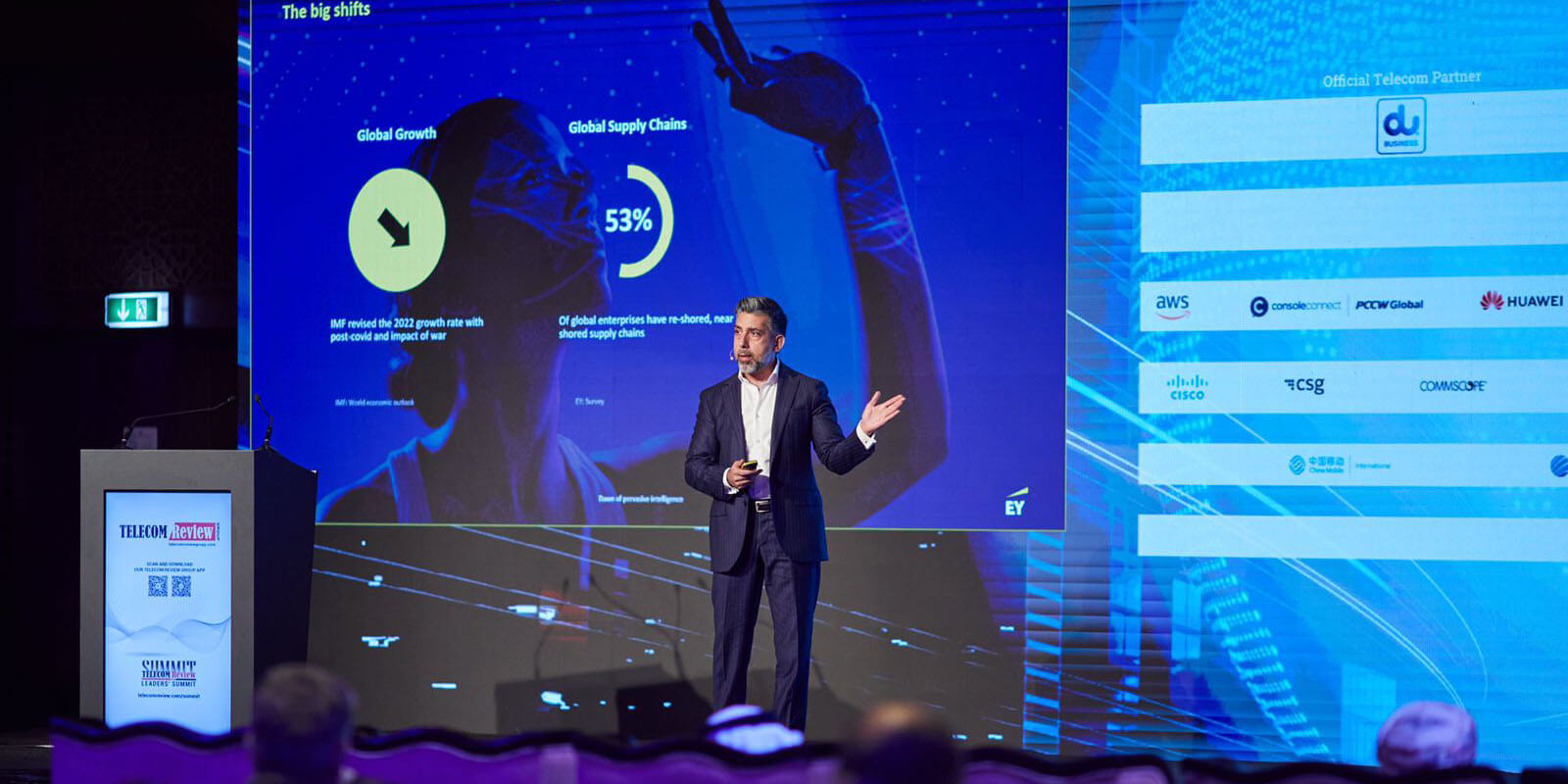EY Global Partner Fuad Siddiqui delivered his keynote entitled “Future G: The Dawn of Pervasive Intelligence,” during the first day of the Telecom Review Leaders’ Summit’s 16th edition.
The telecom industry is generation-driven — from 1G to 4G through to 5/5.5G and 6G. Maximizing its full potential, Siddiqui encourages the audience, who are mainly ICT players, to “think about going beyond our day-to-day of critical thinking and exposing the power of those networks to drive true collective intelligence across the industry and society.”
Three Big Shifts
As we enter the era of human industrial augmentation, he highlighted three big shifts that are prevalent today: global growth, global supply chains and remote everything.
The IMF has declined its 2022 growth forecast due to the post-COVID scenario and the impact of the war in Ukraine. Siddiqui mentioned that digitalization strategies with quality networks are the “sweet spot” needed to turn economies around from a broader perspective.
Based on an EY survey of 1,000 enterprises and CEOs, 53% of the companies have re-shored their supply chains. “We have to think about what is the role of the future networks, ensuring that the supply chain works because that's the backbone of the economy.”
His final point stands for the workforce and the jobs of the future. “We call it remote everything, which means that you should be able to have the ability to work, diagnose, manipulate, assemble, create and contextualize from anywhere in the world,” Siddiqui explained. Stitching digital connectivity and cloud environments together will drive this innovation.
6G Enables Value Creation in the Next Decade
In his presentation, the dawn of pervasive intelligence showed how harnessing our world’s collective intelligence would result in a secure network of networks that make industries pervasively intelligent.
These include autonomous ships and ports, autonomous trucks and intelligent warehouses/factories. “When you extend the human senses and the industrial piece together, that's where 6G will come in,” offered Siddiqui.
Bringing supply chains closer together is possible with end-to-end visibility and pervasive intelligence. How will this work? “You need to make sure that you have to enable your private networks and cloud instances — the business cases within the local environment — from the first step of the supply chain. Moving containers, faster and more autonomously from ship to shore,” he pointed out.
To maintain visibility, private networks and public networks must start to work together in a much more harmonious fashion. This is where telecom providers play a crucial role. “The promise of the 6G is to bring humans and industry together.”
Putting people at the center of the transformation will go a long way. As 5G matures, it creates the convergence of IoT and OT that ecosystem partnerships can benefit from. It leads to 5G+, bringing connectivity and security together and offering it as a service.
Further along, with 6G on the horizon, building cyber-physical systems together and driving at different levels of intelligence becomes pervasive and essential.
“In order to create long-term sustainable value creation, we have to take enterprise industrials very seriously and figure out how to extend the promise of emerging technologies and create a future state position. And that's where my team's focus in EY is bringing our sector expertise, coupled with emerging technology and working with our friends and technology providers to build the right ecosystem that will position us for success,” Siddiqui concluded.











